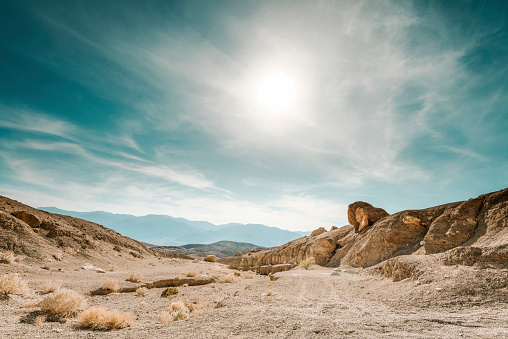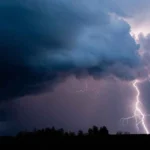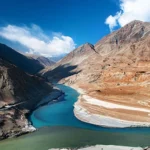
Death Valley is a desert valley located in Eastern California. It is the lowest, driest, and hottest area in North America.
The Mojave Desert is a vast arid region covering parts of southeastern California, southern Nevada, and northwestern Arizona. It spans over 47,000 square miles and is home to a variety of unique plant and animal species. The desert’s landscape features rugged mountains, dry lake beds, and sand dunes, and its climate is known for its extreme temperatures, with scorching hot days and chilly nights.
The Mojave Desert’s total land area is roughly equivalent to the size of the state of Pennsylvania. It is the smallest of the four North American deserts but is still a significant part of the continent’s arid regions. The Mojave Desert’s boundaries are roughly defined by the presence of the Joshua tree, a species of yucca plant found in this region. The desert’s ecosystem is fragile, and it is essential to protect it from human activities that may damage it.
The Mojave Desert’s climate is characterized by its hot, dry summers and mild winters. The average temperature in the summer months can exceed 100 degrees Fahrenheit, while winter temperatures can drop to freezing levels. The desert’s climate is also known for its low humidity, which can lead to rapid dehydration. To survive in the Mojave Desert, plants and animals have adapted unique ways to conserve water and cope with the harsh climate.
The Mojave Desert is home to many unique plant and animal species that have adapted to its harsh environment. Some of the most iconic plants of the Mojave Desert include the Joshua tree, creosote bush, and yucca. Animal species found in the desert include the desert tortoise, bighorn sheep, and coyote. The Mojave Desert is also a vital habitat for many migratory bird species that use it as a stopover during their long journeys.
The Mojave Desert has a long history of human habitation, with evidence of Native American settlements dating back over 10,000 years. The Chemehuevi, Mojave, and Paiute are among the native tribes that have inhabited the area. The Spanish explorers were the first Europeans to explore the Mojave Desert, followed by American settlers who established mining towns in the late 1800s. Today, the Mojave Desert is home to several cities and towns, including Las Vegas, Nevada, and Palm Springs, California.
Francisco Garcés, a Spanish missionary, was the first European to explore the Mojave Desert in 1776. He was followed by other explorers, including Jedediah Smith and John C. Fremont, who mapped the region’s geography and provided valuable information about its flora and fauna. The Mojave Road, a historic trail that runs through the Mojave Desert, was used by Native Americans, Spanish explorers, and American settlers. Today, the Mojave Road is a popular destination for off-road enthusiasts and history buffs.
The Mojave Desert was an important site for military training and testing during World War II. The Army established the Desert Training Center to prepare troops for combat in North Africa. The training center covered over 18,000 square miles and was the largest military training ground in the world at the time. Today, the Mojave Desert is still an important site for military training and testing, with several military installations located in the region.
The Mojave Desert is home to many ghost towns, abandoned mining towns, and other historical sites. Some of the most notable ghost towns in the Mojave Desert include Rhyolite, California, and Calico, California. These towns were once thriving mining communities that were abandoned after the mining boom ended. Today, these ghost towns are popular tourist destinations, providing a glimpse into the region’s mining history and the way of life of the people who lived there.
The Mojave Desert is also home to many natural wonders and attractions. One of the most popular destinations in the desert is Joshua Tree National Park, which covers over 800,000 acres and is home to the famous Joshua trees. Other notable natural attractions include the Mojave National Preserve, Red Rock Canyon State Park, and Death Valley National Park. Visitors to these parks can enjoy hiking, camping, rock climbing, and other outdoor activities.
The Mojave Desert is also known for its mineral wealth. Gold, silver, copper, and other minerals have been mined in the region for over a century. The boom and bust cycles of mining have left a mark on the Mojave Desert’s landscape, with abandoned mines and mining towns dotting the region. Today, mining continues in the Mojave Desert, but it is subject to strict environmental regulations to minimize the impact on the ecosystem.
The Mojave Desert is home to several endangered species, including the desert tortoise and the Mojave Desert fringe-toed lizard. These species are threatened by habitat destruction, climate change, and other human activities. Conservation efforts are underway to protect these species and their habitats, including the establishment of protected areas and habitat restoration projects.
The Mojave Desert is a popular location for filming movies and TV shows, thanks to its unique landscape and remote location. Many famous films, including Star Wars and The Revenant, were filmed in the Mojave Desert. The desert has also been used as a location for music videos and commercials.
The Mojave Desert is known for its unique geological formations, including sand dunes, volcanic cinder cones, and ancient lava flows. The Amboy Crater, a 250-foot-high cinder cone, is one of the most notable geological features in the Mojave Desert. Visitors can hike to the top of the crater for spectacular views of the surrounding landscape.
The Mojave Desert is also home to several military aircraft boneyards, where decommissioned aircraft are stored and dismantled. The boneyards are located at the Mojave Air and Space Port and the Southern California Logistics Airport. These facilities are used to store retired military aircraft, as well as commercial airliners that are being retired from service.
The Mojave Desert is an important site for astronomical research, thanks to its clear skies and remote location. The Palomar Observatory, located in the nearby San Gabriel Mountains, is one of the most famous astronomical research facilities in the world. The Mojave Desert is also home to several smaller observatories and astronomical research facilities.
The Mojave Desert is home to several Native American tribes, including the Chemehuevi, Mojave, and Paiute. These tribes have a rich cultural heritage and have lived in the region for thousands of years. Today, many of these tribes are involved in conservation efforts to protect the Mojave Desert’s ecosystem and preserve their cultural heritage.
The Mojave Desert is a popular destination for off-road enthusiasts, thanks to its rugged terrain and extensive network of dirt roads and trails. The King of the Hammers, an annual off-road racing event, is held in Johnson Valley, California, which is located in the Mojave Desert. The event attracts thousands of spectators and participants from around the world.
The Mojave Desert is also home to several wind and solar power projects, thanks to its abundant sunshine and windy conditions. The Ivanpah Solar Power Facility, located near the California-Nevada border, is one of the largest solar power plants in the world, covering over 5 square miles.
The Mojave Desert has been inhabited by humans for thousands of years. Archaeological evidence suggests that the region was first inhabited by the Paleo-Indians around 12,000 years ago. The desert was also home to several Native American tribes, who lived in the region for thousands of years before the arrival of Europeans.
The Mojave Road, a historic trail that stretches from the Colorado River to the Mojave River, was used by Native Americans, Spanish explorers, and American pioneers. The road was used for transportation, trade, and military purposes. Today, the Mojave Road is a popular destination for off-road enthusiasts and historians.
The Mojave Desert is also home to several ghost towns, abandoned mining towns that were once thriving communities. These towns were abandoned after the mining boom ended, leaving behind empty buildings and a glimpse into the region’s past. Some of the most famous ghost towns in the Mojave Desert include Calico, Rhyolite, and Ballarat.
The Mojave Desert is one of the hottest and driest regions in North America. Temperatures in the summer can reach over 100 degrees Fahrenheit, and the region receives only a few inches of rainfall per year. Despite the harsh conditions, the Mojave Desert is home to a variety of plant and animal species, many of which are adapted to the extreme environment.
The Mojave Desert has been the site of several notable events in American history. In 1846, the Mormon Battalion crossed the Mojave Desert on their way to California. In 1908, the Tunguska event, an explosion caused by a meteor or comet, was visible in the Mojave Desert. In 1942, the Japanese submarine I-25 launched a seaplane that dropped incendiary bombs on the forest near Mount Emily, Oregon, which was visible from the Mojave Desert. The Mojave Desert also played a role in the development of the aerospace industry, as several aerospace companies, including Lockheed Martin and Northrop Grumman, have facilities in the region.









